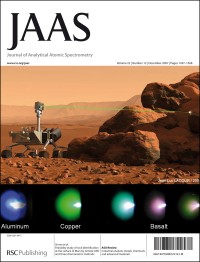Back in 2007, we published a paper in JAAS about the LIBS analysis that would be used to identify rocks during an upcoming mission to study Mars. Now, the ChemCam instrument is an operational part of the Mars Science Laboratory on the Curiosity mission, helping to achieve its four goals:
- Determine whether life ever arose on Mars
- Characterize the climate of Mars
- Characterize the geology of Mars
- Prepare for human exploration
Take a look at the paper, which will be free to access until 30 September 2012 to see why the combination of two chemometric approaches mean a higher level of analytical accuracy:
Feasibility study of rock identification at the surface of Mars by remote laser-induced breakdown spectroscopy and three chemometric methods
Jean-Baptiste Sirven, Béatrice Sallé, Patrick Mauchien, Jean-Luc Lacour, Sylvestre Maurice and Gérard Manhès
J. Anal. At. Spectrom., 2007,22, 1471-1480
DOI: 10.1039/B704868H
Want to know more about this mission to the Red Planet? We will be gaining insight from one of the drivers of the Curiosity rover live this Friday. Paolo Bellutta works at NASA’s Jet Propulsion Laboratory and he will join us live from Pasadena on Friday 7 September at 16:00 BST for a question-and-answer session to be broadcast on the RSC YouTube channel.
![]() Find out more here, and follow things on Twitter using #RSCmars
Find out more here, and follow things on Twitter using #RSCmars











